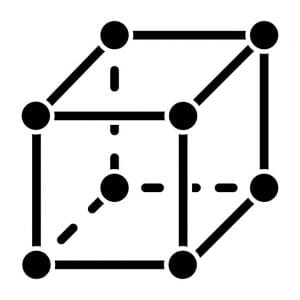The October 2008 issue of Inc. magazine made it to the top of my reading pile today and I was delighted to read another great “Street Smarts” column by Norm Brodsky “Secrets of the $110 Million Dollar Man” which offers ten guidelines for starting a successful business.
Norm Brodsky’s Guidelines For Entrepreneurs
Brodsky’s definition of success should be familiar to anyone who is bootstrapping:
“By successful, I mean a business that lives off its own cash flow, provides a good living for its owners and employees, and generates the profit it needs to keep growing.”
Norm Brodsky in “Secrets of the $110 Million Dollar Man”
He offers ten rules from 30 years of entrepreneurial efforts that he continues to rely on. I have picked what I think are the top three for software entrepreneurs and encourage you to read the rest of the article
 1. Numbers run a business.
1. Numbers run a business.
If you don’t know how to read them, you are flying blind. A business is a living entity with needs of its own that the leaders must pay attention to or it will fail. The only way to determine business needs are to look at key numbers and the relationships between them. We spend a lot of time with clients on determining what the dashboard for their business should look like, typically starting with their sales funnel, and tuning strategies and tactics in response to the numbers.
2. A sale isn’t a sale until you collect.
You don’t collect on bad debt and how long it takes to collect can leave you short of cash even though you’ve made a lot of sales. Every business with receivables is in effect a bank. As I have written previously, every business that generates receivables is, in effect, a “bank.” When you deliver a product or a service in the belief that the customer will eventually pay you for it, you are making a loan. You need to determine whether a customer is creditworthy and monitor your average collection time on outstanding debt. Understanding cash flow and the credit risk you are assuming is key to getting through the downturn we are currently experiencing.
3. Forget shortcuts.
Everything a great business needs takes hard work and time:
- a diversified base of loyal customers
- experienced managers
- a vibrant culture
- efficient systems throughout the business
- a sales force that works as a team
- a great reputation in the industry.
This might also be called “the old man’s business model” in contrast to Paul Tyma‘s “The Young Man’s Business Model.”
Be clear on personal shortcomings so they don’t hold you back.
So why was Brodsky a $110 million dollar man? He is as frank about his shortcomings as his success:
I am more impatient than most and tried just about every shortcut in the book — like hiring salespeople from competitors and promoting employees just because they are available. It finally dawned on me that my shortcuts were serving only to prolong the process of building the great company I wanted. Why was I in such a hurry, anyway? A great company is one that can last forever, and I needed to make decisions in that frame of mind — even though I fully expected to sell the business someday. My records-storage business, CitiStorage, would be worth more if I took my time and did what was best for the company in the long term. Indeed, it was. As you may know, I ultimately sold it and two related businesses for $110 million.
Norm Brodsky in “Secrets of the $110 Million Dollar Man”
Related Blog Posts
- Paul Tyma on “The Old Man’s Business Model”
- Sketching The Likeness Of An Imaginary Business
- 8 Tips For Bootstrapping A Service Business
- Ten Mistakes Early Stage Bootstrappers Often Make
- Five Serious Financial Mistakes Bootstrappers Can Avoid
Image Credit: Cube Molecular Icon by Iconisa (licensed from 123RF)

Pingback: SKMurphy » Conserving Trust in a Downturn